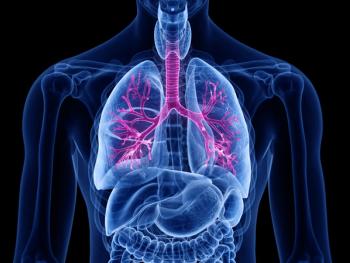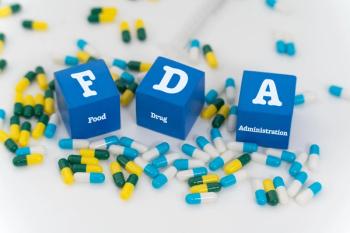
- Drug Topics January 2020
- Volume 164
- Issue 1
Lefamulin (Xenleta) for Community Acquired Bacterial Pneumonia
Lefamulin was approved by the FDA in August 2019 for the treatment of CABP.
Community acquired bacterial pneumonia (CABP) can result in hospitalizations, morbidity, and mortality.1
Strepococcus pneumoniae is one of the most common bacterial pathogens and has shown increased resistance to typical antibacterial therapies.2 Lefamulin, a novel pleuromutilin antibiotic that inhibits the 50S ribosomal subunit at the peptidyl transferase center, with known activity against typical CABP organisms, was approved by the FDA in August 2019 for the treatment of CABP.1,2
EFFICACY
In the LEAP 1 trial, lefamulin was shown to be noninferior to moxifloxacin ± linezolid (if MRSA coverage necessary) in the treatment of CABP in hospitalized adults. In a randomized controlled trial, IV to PO lefamulin was as successful as IV to PO moxifloxacin ± linezolid at improving at least 2 CABP symptoms without worsening of CABP or the need to receive a non-study antibiotic for treatment.2
In the LEAP 2 trial, oral lefamulin demonstrated noninferiority to oral moxifloxacin for CABP. PO lefamulin was as successful as PO moxifloxacin at achieving resolution of CABP symptoms without worsening of CABP or the need to receive a non-study antibiotic for treatment.3
Although in the LEAP 1 trial lefamulin was used to treat CABP caused by MRSA, the product package insert does not endorse that use due to only treating a small number of patients in the study and the need for additional antibiotics for treatment.4
SAFETY
Commonly reported adverse events related to lefamulin in LEAP 1 and LEAP 2 include administration site reactions, elevation of hepatic enzymes, nausea/vomiting/diarrhea, headache, insomnia, and hypokalemia. Serious adverse events include QTc prolongation and the risk of Clostridium difficile-associated diarrhea. No C. difficile infections were observed in either treatment arm of LEAP 1 and 1 incidence of C. difficile was associated with lefamulin treatment in LEAP.2,3,4
DOSING AND ADMINISTRATION
Lefamulin IV is dosed at 150 mg every 12 hours over 60 minutes for 5-7 days. It can be switched to oral therapy once the patient is clinically stable. Lefamulin IV is available as a 15 mL vial that will be further diluted by addition into a supplied diluent bag that contains 250 mL of 10 mM citrate buffered 0.9% sodium chloride. Lefamulin PO is dosed at 600 mg every 12 hours for 5 days. Take the tablets at least 1 hour before or 2 hours after a meal. The tablets cannot be crushed or split.
In patients with severe hepatic impairment (Child-Pugh Class C), lefamulin IV should be hepatically dose-adjusted to 150 mg IV every 24 hours over 60 minutes. Lefamulin PO has not been studied in patients with hepatic impairment. Both lefamulin formulations do not need to be renally dose adjusted.
References:
1. FDA.gov [Internet]. 2019 Aug 19. FDA approves new antibiotic to treat community-acquired bacterial pneumonia. Available from: https://www. fda.gov/news-events/press-announcements/ fda-approves-new-antibiotic-treat-community-acquired-bacterial-pneumonia.
2. File Jr. TM, Goldberg L, Das A, et al. Efficacy and safety of intravenous-to-oral leafmulin, a pleuromutilin antibiotic, for the treatment of community-acquired bacterial pneumonia: the phase III lefamulin evaluation against pneumonia (LEAP 1) trial. Clin Infect Dis. 2019 Feb 4. [epub ahead of print].
3. Alexander E, Goldbery L, Das A, et al. Oral lefamulin is safe and effective in the treatment of adults with community-acquired bacterial pneumonia (CABP): results of lefamulin evaluation against pneumonia (LEAP 2) study. Open Forum Infectious Diseases. 2018 Nov 26; 5(S1): S761. Available at: https://idsa.confex.com/ idsa/2018/webprogram/Paper74297.html
4. Lefamulin (Xenleta®) package insert. Nabriva Therapeutics US, Inc., of Nabriva Therapeutics Ireland DAC. 2019.
Articles in this issue
almost 6 years ago
The 'Unattainable Triangle' of Community Pharmacyalmost 6 years ago
Pharmacy Trends in 2020 and Beyond: Preparing for a New Decadealmost 6 years ago
What Pharmacists Are Saying About Stressalmost 6 years ago
What Pharmacists Need to Know About Psoriasis Medicationsalmost 6 years ago
4 Pharmacy New Year’s Resolutions For 2020almost 6 years ago
Addressing the Opioid Crisis in 2020almost 6 years ago
An Update on Pharmacists’ Vaccination Authorityalmost 6 years ago
A Look Ahead: What to Expect from the Pharmacy Landscape in 2020almost 6 years ago
Educating Patients on the Latest Diabetes TechnologyNewsletter
Pharmacy practice is always changing. Stay ahead of the curve with the Drug Topics newsletter and get the latest drug information, industry trends, and patient care tips.











































































































































































































